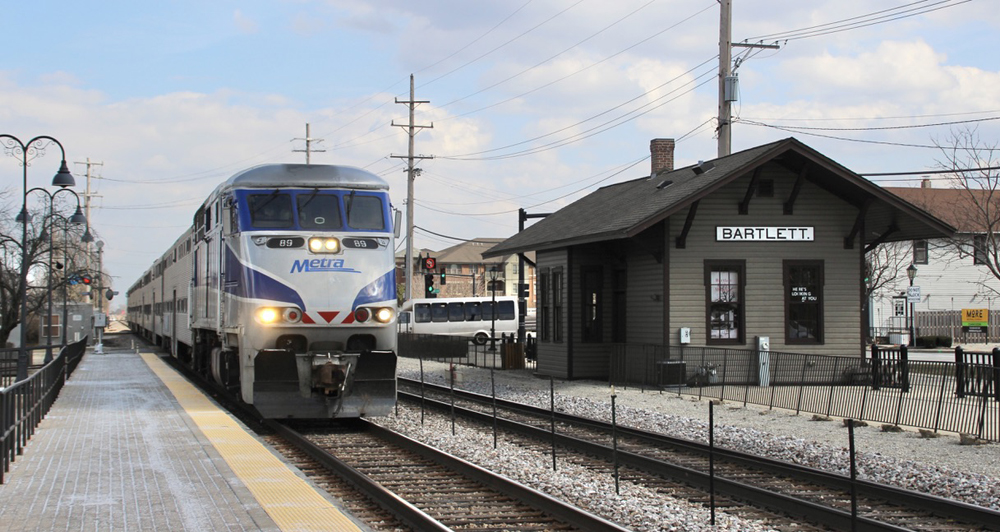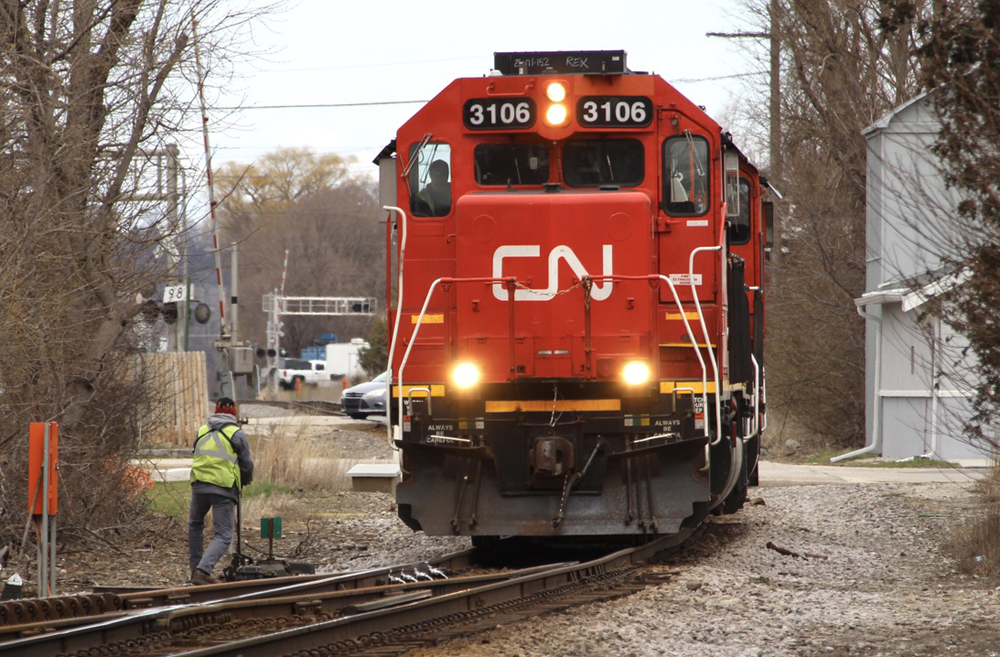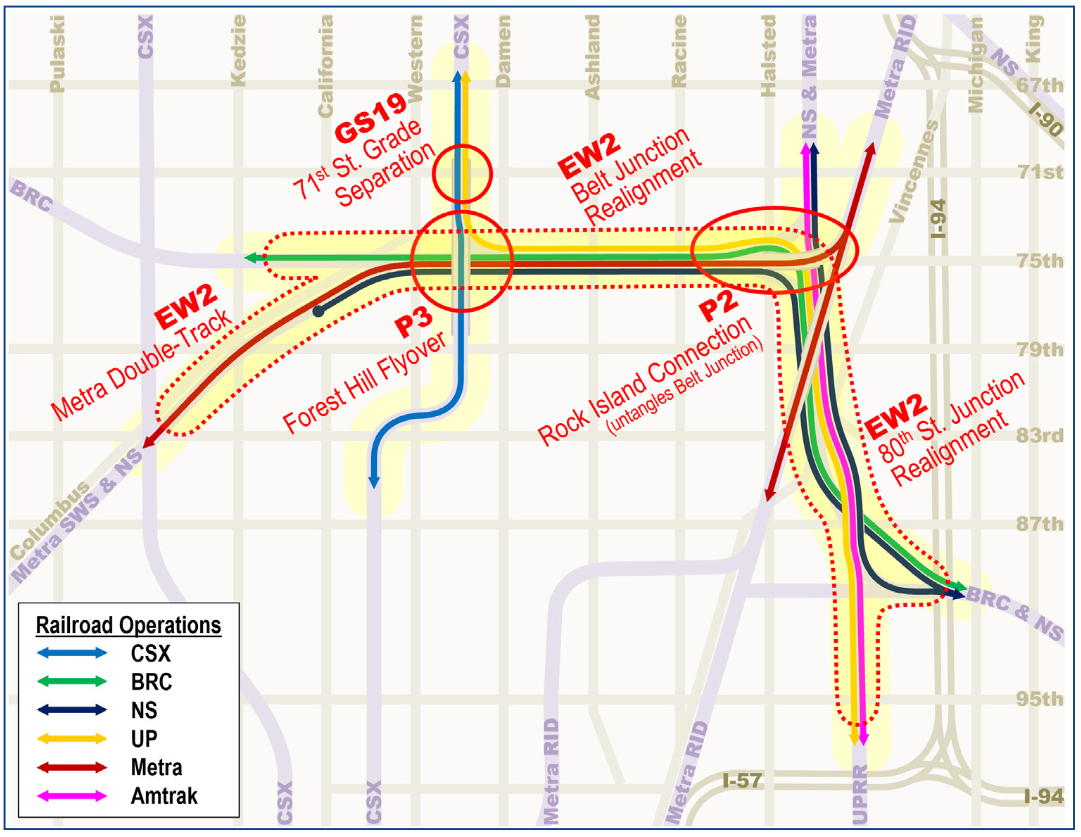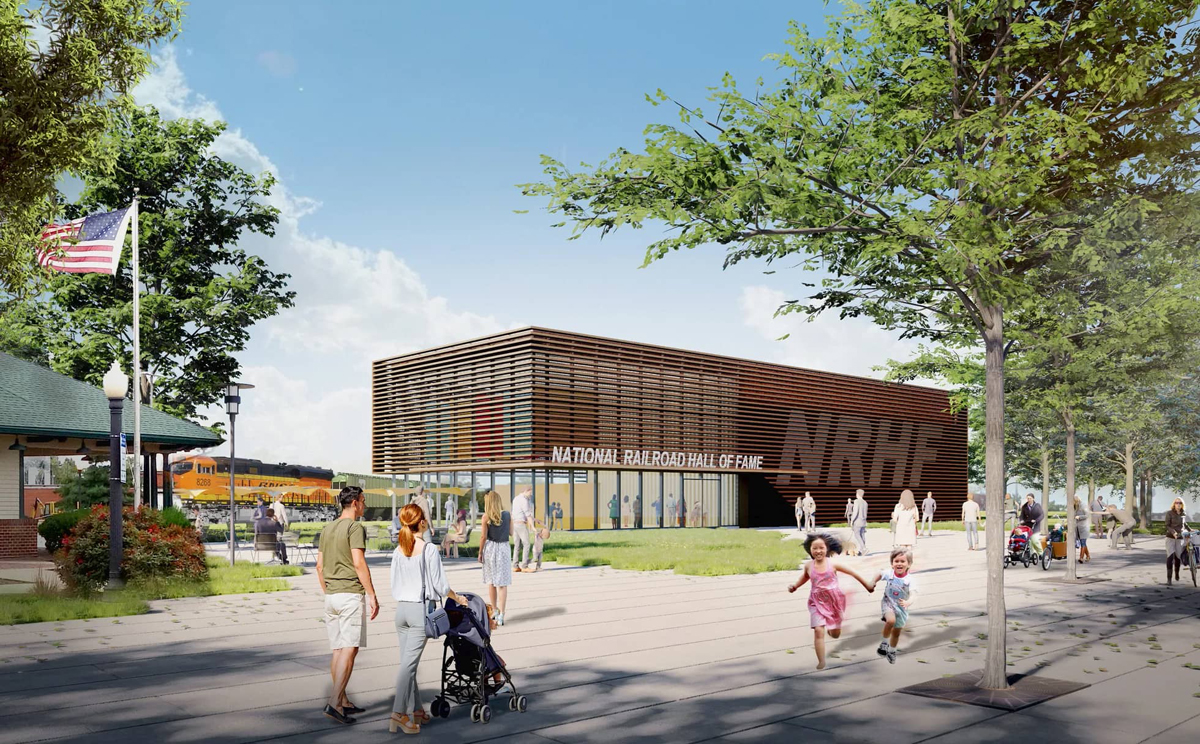
WASHINGTON — As part of their merger, Canadian Pacific and Kansas City Southern will work with a group of Chicago-area communities on voluntary measures to address traffic concerns in those communities, the railroads say in the final Environmental Impact Statement released today (Friday, Jan. 27) by the Surface Transportation Board’s Office of Environmental Analysis.
The final report largely reached the same conclusion as the preliminary document reached last year, that environmental impacts would be “negligible, minor, and/or temporary” [see “Final environmental review finds few problems …,” Trains News Wire, Jan. 27, 2023].
The CP plans for the communities of Bartlett, Benseville, Elgin, Itasca, Hanover Park, Roselle, Schaumburg, and Wood Dale, along with DuPage County — which had formed a vocal opposition group, the Coalition to Stop CPKC — are part of a series of voluntary mitigation efforts that also include the Houston area, as well as 10 communities where CPKC had previously negotiated agreements.
The plan in the western Chicago suburbs, along the CP line shared with Metra’s Milwaukee West commuter service, call for four forms of mitigation:
— Funding toward the implementation of quiet zones, subject to “necessary FTA approvals and practicability.”
— Installing and funding a system connected to existing grade crossing signals, to deliver advanced notice of blocked crossings to residents, first responders, and others.
— Installing and funding ITS Interconnect for Advanced Warning Signs at strategic locations to give drivers information about occupied crossings, allowing them to make better decisions.
— Funding and installing positive train control technology tie-ins at crossings adjacent to Metra platforms, which will minimize the activation of crossing gates.
The report notes that because Metra owns this trackage, it would have to approve much of this work. CP and KCS say they would work with Metra, the communities, and relevant agencies to obtain needed approval.
The communities in the Coalition to Stop CPKC at one time were seeking more than $9 billion in mitigation measures; by the time of the STB merger hearing last September, they had lowered that figure to $400 million [see “CP and KCS tout and defend their merger …,” News Wire, Sept. 28, 2022]. Coalition members and politicians representing the area had also asked the STB to halt consideration of the merger until after it conducted a separate study on its impact on the Chicago area [see “Chicago-area opponents ask regulators to delay decision …,” News Wire, Oct. 5, 2022].
In the Houston area, CPKC says it will meet regularly with community representatives and work to address any merger-related impacts communities may experience. It also says it will work alongside other Houston-area railroads — “notwithstanding that it will own no track there” — to address the impact of rail operations. CPKC will also provide Houston community leaders with ways to report issues.
CP and KCS has previously reached agreement with the Iowa communities of Davenport, Bettendorf, Muscatine, LeClaire, Clinton, Washington, and Fruitland; Hampshire and Pingree Grove, Ill.; and Liberty, Mo. The final recommendation by the Office of Environmental Analysis incorporates those agreements, as well as any similar agreements the railroad may still reach. It also recommends that the railroad establish a community liaison position for both the Houston area and the Chicago area, to be funded and staffed for five years following approval of the merger. That liaison will be available for public meetings and to conduct periodic outreach to local public officials.














@Mark Shapp…Your statement about a “foreign national freight railroad” dispatching a U.S. taxpayer-funded commuter railroad are little off the mark. Technicall speaking, the Soo Line is a U.S. based railroad that happens to be owned by the Canadian based CP, on paper that’s who does the dispatching(even though it’s only on paper). After the merger, all U.S. corporate functions including the most likely centralized dispatching center will be moved to Kansas City(note, that is a U.S. city on U.S. soil). Get off your high horse, an agreement was signed when Metra took over the rail lines, until it’s current configuration is NEGOTIATED away, that is not something the STB can decree in their merger approval.
I have to agree with Gerald on this. The two biggest railroads in my part of Wisconsin both begin with the word “Canadian”. They seem pretty much American to me.
Years ago, DWP, GTW and GT, all of which were traditional CN subsidiaries from the beinning of CN, were headquarteed in downtown Detroit.
Not to mention most of the stock in both CN and CP is probably owned in the US. If Canadians can tolerate all our successful companies eventually being sold to Americans or muscled out by American competitors, I’m sure the US can survive a couple of semi-Canadian railways returning the favour.
Mr. Rice, could you please expand on “routing traffic from the north to reach Clearing and “shuttle service via IHB at Bensenville”. I’m quite familiar with the territory and I haven’t a clue as to the traffic flows you are referring to. The only way CP freights coming down from Milwaukee can access the BRC and IHB connections is to get on the UP Milwaukee Sub at Tower A20/Shermer Road, around the western perimeter of ORD, off the UP at Bryn Mawr, on to the Metra Milw West Line/CP Elgin Sub, thence east to Tower B12’s IHB connection or east on the Milw West main to the BRC connection at Cicero West Interlocking.
In the response from Metra, there was a reference to two things that they were worried about.
First one was the fact that CPKC does this unusual backup move at Bryn Mawr to get freights pushed down to Clearing which fouls the Metra MILW West line.
Second was if they have problems in or around their junction at Sabula, Iowa, CPKC will be forced to route traffic to Bensenville from the north, which if that traffic comes in from the junction with the Metra line (depending how long it is) can foul the the switchover impacting Metra schedules.
This appears to be a more rational approach to resolution compared to that ridiculous $9B USD pork rollout that had little to do with actual rail service abatement.
Technology is a wonderful thing when used appropriately and it appears that the CPKC will leverage some of those tools.
Enforcing a salaried community liason staff person for a 5 year minimum is an excellent idea and provides a near ombudsman approach so you don’t have to engage the lawyers first.
I am still curious how CPKC plans to get Metra off their back about routing traffic from the north to reach Clearing instead of the costly shuttle service via IHB at Bensenville.
Metra needs to get the CP “off its back” by the STB forcing CP to convey the train dispatching of all the Metra-owned territory to Metra. C’mon Marty Oberman. You are a Chicagoan. Metra owns the C&M Sub from the end of Amtrak territory on the north side of CUS to Rondout, the Fox Lake Sub, and the Elgin Sub Tower A5-Big Timber Road. And Metra is responsible for all mainline engineering functions. There is no precedent for a foreign national freight railroad to have dispatching rights on a U.S. taxpayer-funded commuter railroad. Whatever agreements were made back when that gave CP dispatching rights need to be ended. Metra has a centralized dispatching office. Marty, tell CP that the STB will not sign off on CP+KCS unless you relinquish the train dispatching on Metra-owned territory to Metra.
Mr. Rice, regarding “Bryn Mawr”, there is no “back up move” required to go to the BRC. It’s a head-on move off the connection from the UP Milw Sub to the Metra Milw West/CP Elgin Sub and then east past Tower B12 and Galewood East Interlockings to a head-on move to the BRC at Cicero West Interlocking. What you seem to be referring to is a CP train staying on the Metra Milw North/CP C&M Sub all the way to Tower A5. Then they would have to go around the connection to the Milw West in the northwest quadrant of the interlocking and head west to get by the BRC connection at Cicero West Interlocking. But the train is now turned the wrong way. It would most probably have to duck into Galewood Yard and run the power around. Then they would head out of Galewood east on Tk3 to the BRC connection. CP freights are not going to “push down” to the BRC mains and go to Clearing. What you seem to be referring to in your last paragraph is the move at Tower A20 to the connection tracks up to the UP Milw Sub. And yes, if the train is “PSR long” and the UP stops the train at Shermer Road Interlocking, the train could be fouling A20 and the potential for Metra (and Amtrak) delays is real.
I meant Cragin, not Bryn Maur. My apologies.